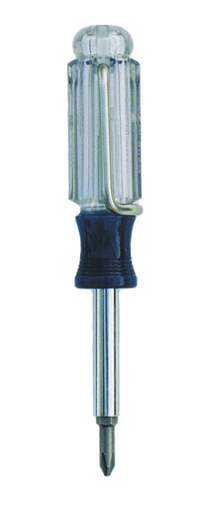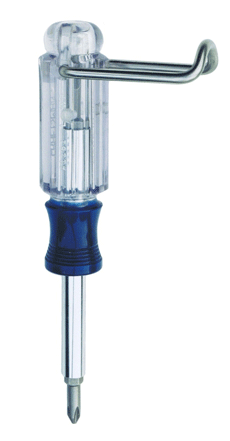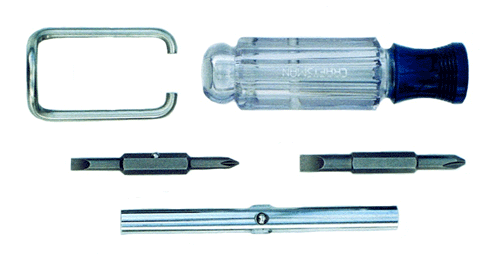SAMPLE UTILITY PATENT
LEVER TOOL HANDLE
Here is a description of each of the parts of a sample Utility Patent for the invention entitled LEVER TOOL HANDLE. To view the patent, click on a page.
Page 1
This is the Title page, and includes the invention title, the inventor's name and address, the patent number, filing number, filing date, and the class and subclasses under which the invention is categorized by the Patent Office. References are listed, including U.S. patents and foreign patents.
An abstract gives a brief description of the invention, indicating the main points of novelty and function to a searcher.
Included is one drawing figure that best shows the invention.
Page 2
Drawing Figs. 1 and 2 show perspective views of the two embodiments of the invention. A patent may have many embodiments or versions of the invention, as long as one claim is generic, that is, it claims all of the embodiments.
Page 3
Drawing Figs. 3 - 8 show different views of the first embodiment. Part numbers and leaders point to the various elements.
Page 4
Drawing Figs. 9 - 14 show different views of the second embodiment.
Page 5
The specification begins with the background, which describes the field of art that the invention belongs to, a discussion of the prior art, what problems have been encountered in the field, and failures of the prior art devices to solve the problems.
Next is a summary of the invention, usually taken from the broadest claim. The summary includes objects of the invention, telling what problems the invention will solve.
Page 6
A description of the drawing lists all the figures, what kind of view is shown, and where section lines are taken. Then comes a detailed description of the preferred embodiments, describing each element, what it does, and how it is connected to other elements, using the part numbers. The best mode of operation, how the invention is used, and what materials it is made from are disclosed.
Page 7
The detailed description is completed. The description must be sufficiently detailed that a person skilled in the art and technology of the field of the invention could make and use the invention.
Lastly, the claims are presented. Patent claims are carefully constructed to be rigorously correct from both technical and legal viewpoints. Claims vary in the degree to which they explicitly define the patentable novelty of the invention. The broad claims recite the fewest elements and least details that will define a complete invention. The narrow claims offer more details. A range of claims is presented, from broadest to narrowest.
Page 8
The claims are continued. Independent claims can stand alone. Dependent claims are connected back to an independent claim, and are subject to the limitations of the independent claim. Each dependent claim in the "chain" of dependency further defines, and thereby limits the scope of, the invention of the independent claim.
Page 9
The claims are completed.


